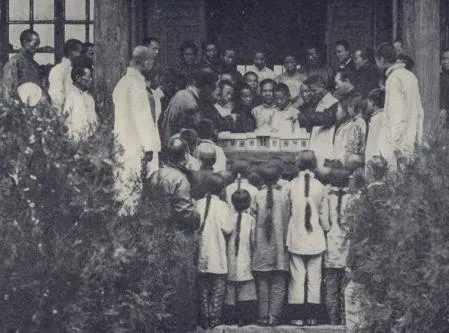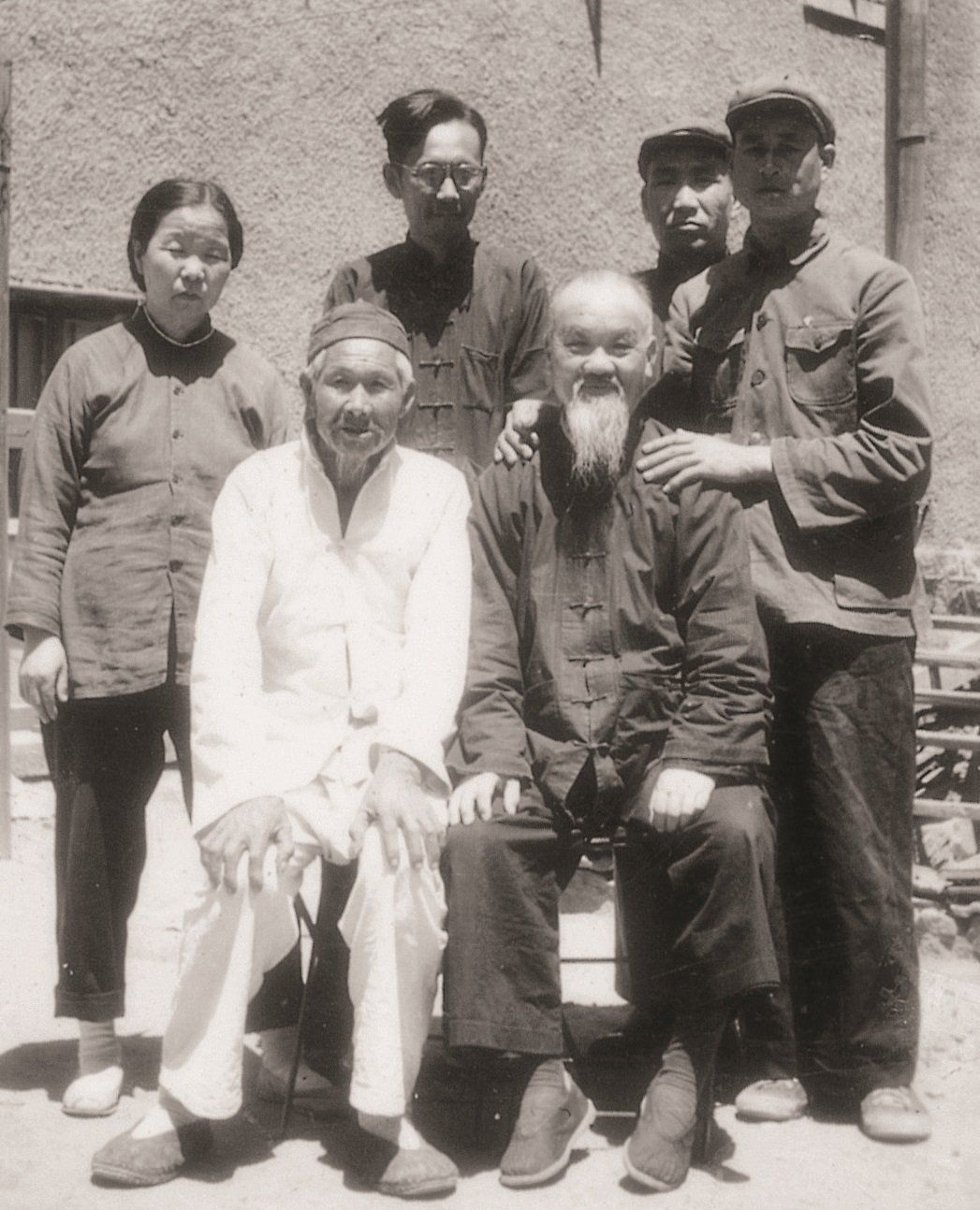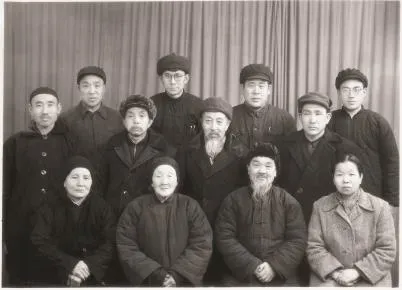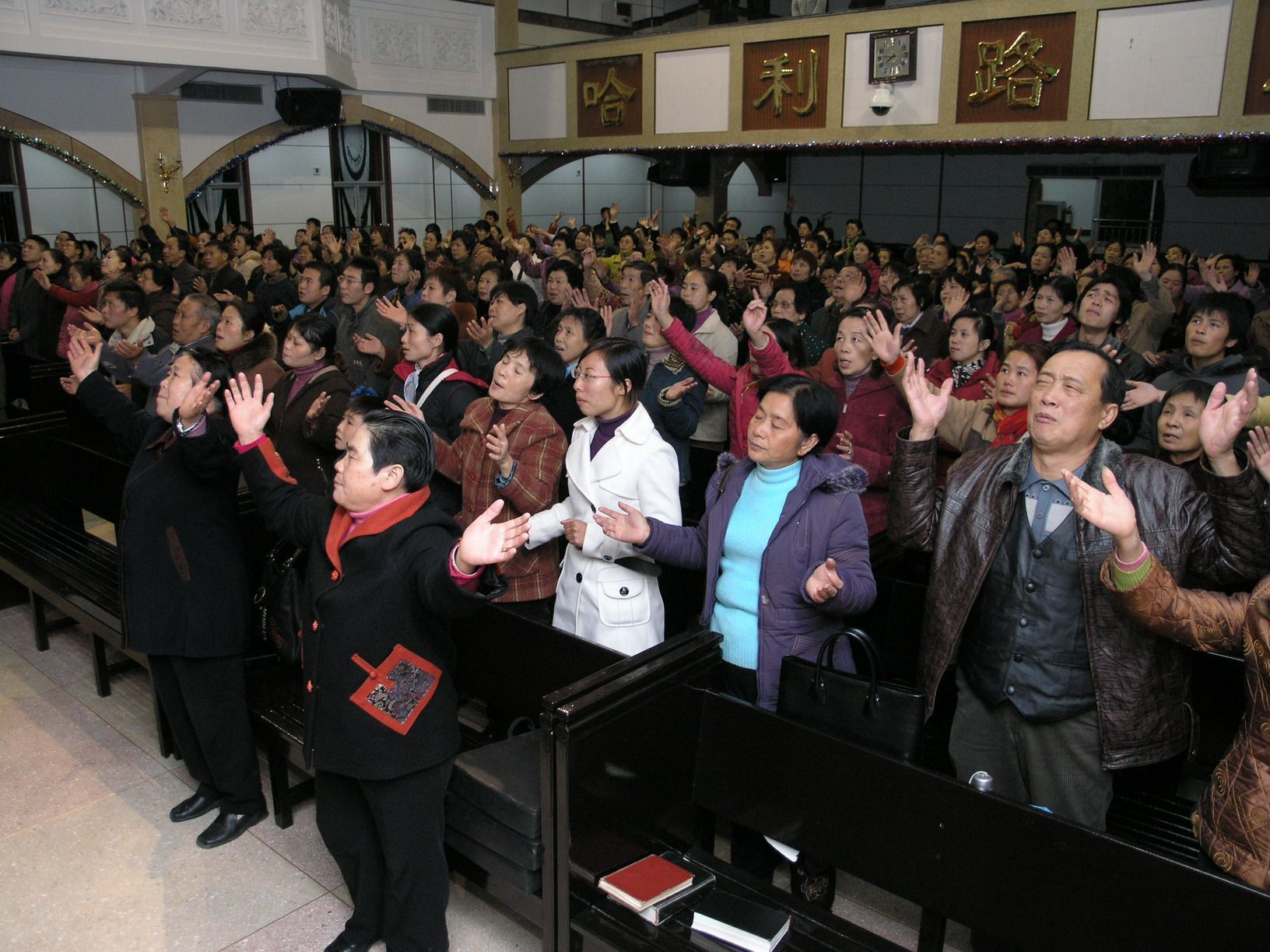1940s

Chinese evangelists preaching outside the home of Confucius at Qufu.
The revival in Shandong throughout the late 1920s and 1930s had far-reaching effects, and attracted numerous new mission groups to the province. Almost every Western denomination was represented in Shandong during the 1940s, up until the time missionaries were expelled from China by the new Communist regime in the 1950s.
Until the end of the Second World War the Christians in rural areas of Shandong experienced an intensely difficult time because of the Japanese occupation. The province was invaded from the north and east in December 1937, and many cities and towns were heavily bombed. Troops on the ground murdered, looted, and raped defenseless women and girls. In the rural areas of Shandong,
"Utmost confusion prevailed. Chinese guerrilla bands raided enemy outposts, and Japanese soldiers retaliated by attacking villages and small towns. Regular church and evangelistic work became impracticable. But Chinese pastors and local Christian leaders did their utmost to carry on.... Missionaries found it practically impossible between 1938 and December 1941 to undertake country journeys." 1
The Church of the Nazarene
During a severe famine in 1920-21, the Church of the Nazarene Mission had constructed a large school and other facilities to bring relief to the desperate population. The location chosen for their base was the town of Chaocheng in western Shandong. This strategic location sits just north of the Yellow River, near the juncture of the three provinces of Shandong, Hebei and Henan. A new church building, built on the spot where a Chinese prison had long stood, was described as a place where
"Men and women could be set free from the bondage of sin, where they could be fed on the Bread from heaven and drink to their heart's content from the wells of salvation; a place where a real liberty of soul might be found, and where the matchless love of God through the forgiveness of their sins and the sanctification of their hearts might be realized. It was in this building that the working of the Spirit was so manifested during the revival in 1927.... Many will be found in heaven as a result of those revivals.
Here we saw a great many people, both young and old, getting right with God and with each other. We saw demons cast out and unhappy souls made happy indeed. People with penitent tears confessed their sins and many sought holiness of the heart. Families were reunited around the altar. We were living night and day where the glory came down." 2
When the Japanese launched war in Shandong, tens of thousands of troops arrived on ships across the Sea of Japan, and the entire province soon fell into the hands of the cruel Japanese forces. One day Japanese bombers flew low over the Nazarene church and reduced it to rubble.
The buildings may have been destroyed, but the wickedness of men could not snuff out the fire of the Holy Spirit that had transformed the lives of many people in Chaocheng. The revival spread from the little-known town to many outlying areas. Hundreds of people had been deeply touched by their experiences after visiting the Nazarene church, and had taken the revival fires home with them. As a result,
"Evangelistic parties were sent out to other sections of that territory with outstanding results. One village came to be called 'The Christian Village'. There were professing Christians in almost every home. Where formerly there were many beggars in the village, now, having destroyed their idols, and having established a Christian school for their children, only two beggars remained in the whole village....
So many people came for personal prayer between meetings that there was little time to rest or to eat meals.... Within a few years in this village, people were wearing better clothing, eating better food, dwelling in better homes, and buying more land than they had ever owned before." 3
Pang Zhiyi —Korean Missionary to China

Pang Zhiyi, back row, center, with some of his Chinese co-workers.
After a phenomenal revival swept millions of Koreans into the kingdom of God during the first two decades of the twentieth century, the Holy Spirit raised up many servants with a passion to preach the gospel wherever He would send them.
One such servant was Pang Zhiyi, who became one of the first Korean Evangelical missionaries to China. Pang was born in Korea in 1911, and although details are scarce, it's believed he first crossed the Chinese border to commence work in Shandong in the mid-1930s.
To earn money, for years Pang's wife worked as a piano teacher. Her job was considered a novelty as few people owned a piano at the time, and crowds regularly flocked to their home to hear the strange new instrument. This afforded the Pangs a tremendous opportunity to share the gospel with people.
Although they arrived in Shandong toward the end of the revival in the 1930s, God mightily used the Pangs and hundreds of Chinese placed their trust in the Lord Jesus Christ because of their ministry. They continued to faithfully serve during the tumult of the 1940s, and remained in Shandong until the early 1950s, when the Communist government expelled them. After carefully watching Pang for years, one day the Public Security Bureau called him into their offices and showed him a huge file of evidence they had collected against him, detailing his key involvement in the churches of Shandong.

Pang Zhiyi (back row, second from left) with his Chinese co-workers in Shandong. Pang's wife is in the front row on the right.
Pang and his wife were expelled from China, but before returning to Korea they stopped in Hong Kong. At the time, the Christian world was divided over whether the new Communist regime in China was a positive development for the Church, or if it was a ravenous wolf dressed in sheep's clothing that was waiting to pounce on the Body of Christ.
Pang had firsthand experience of the true nature of the Communists and the brutal persecution they were already conducting throughout Shandong. Feeling a responsibility to warn Christians around the world of the truth, in Hong Kong he wrote a long article exposing the reality of life under Mao's regime.
After publishing the article, Pang and his wife traveled to South Korea, where they spent decades in the service of the Lord. Pang finally died in 2015, at the ripe old age of 104. He had been a faithful weapon in the hands of God his entire life, and many people both in Shandong and on the Korean Peninsula will rise up and call Pang blessed at the Judgment.
© This article is an extract from Paul Hattaway's book 'Shandong: The Revival Province'. You can order this or any of The China Chronicles books and e-books from our online bookstore.
1. H.R. Williamson, British Baptists in China, 1845-1952 (London: Carey Kingsgate Press, 1957), p. 158.
2. L.C. Osborn, The China Story: The Church of the Nazarene in China, South China, and Taiwan (Kansas City, MO: Nazarene Publishing House, 1969), p. 25.
3. Osborn, The China Story, p. 27.





